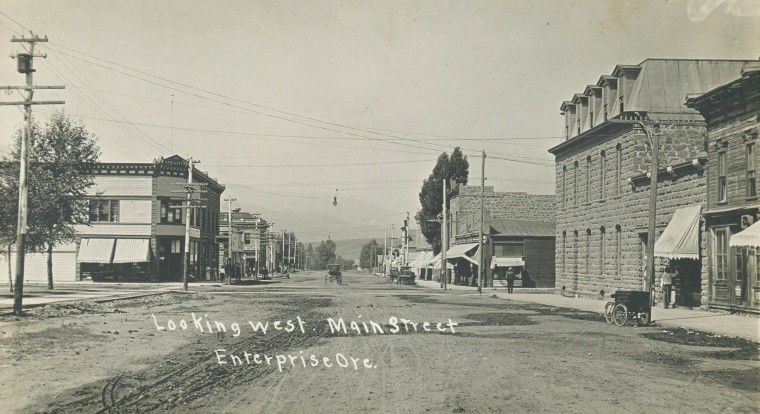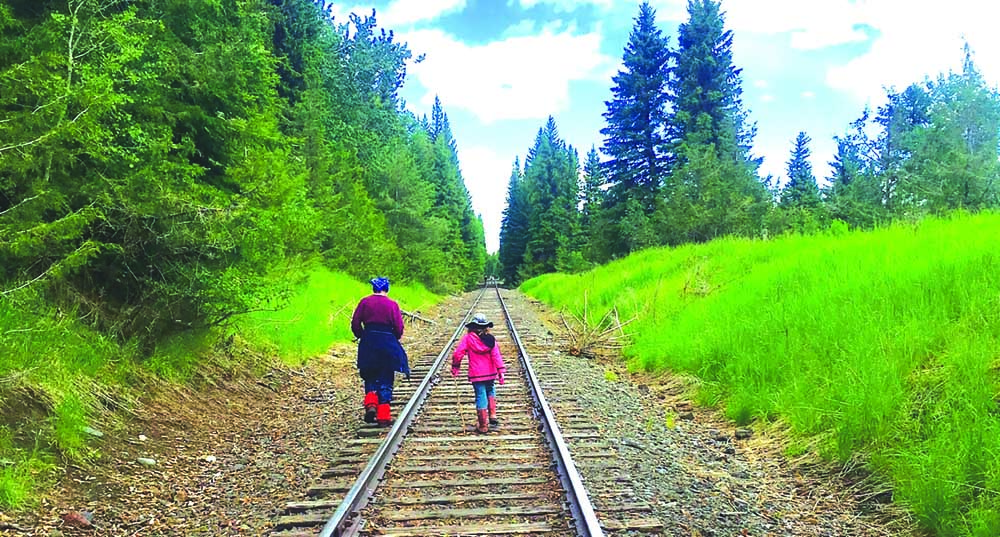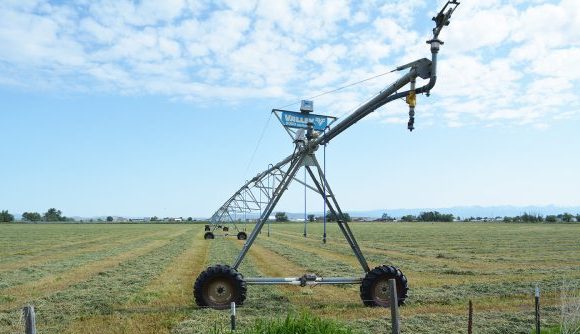A county shaped by 125 years
Published 4:00 pm Wednesday, January 25, 2012

- <p>This old photo postcard shows Enterprise in its young days, before paved streets but after electricity had been installed in 1901 (note the light hanging from a wire over Main Street).</p>
Editor’s note: This account was adapted from a history written by Lloyd Coffman and published in the Chieftain in 1987.
Wallowa County turns 125 on Feb . 11. It was on that date in 1887 that Oregon Governor Sylvester Penoyer signed a bill that had been introduced earlier that month by Senator F.D. McCully, a resident of the Wallowa. McCully, newly elected to the Legislature, had run on a platform of separation from Union County, a proposal embraced by a majority of people in the Wallowa.
The legal designation of the Wallowa as a distinct county in northeastern Oregon marked the beginning of a new era in the remote corner of the state in more ways than one. The frontier had passed, and now the future belonged to the capitalist.
In the summer of 1887, a group of Grande Ronde merchants known corporately as the Island City Mercantile and Milling Company viewed the progress of the Wallowa to county status with considerable interest. These men recently had been frustrated in their attempt to route the new Oregon transcontinental railroad link through their town of Island City and they fully realized that the future of the Grande Ronde belonged now to the more successful La Grande. So they were looking for investment opportunities elsewhere. The new, undeveloped county to their east seemed a godsend. An ICM&M partner, Jonas Church, visited with leading citizens of Lostine and proposed to those city fathers that his firm build in their town a general store, a bank, and a flour mill. In return, the citizens would donate the necessary property. When the citizens counter-proposed that they sell the firm the property instead, albeit at a low price, Church and ICC&M sought a free land deal elsewhere.
To the Lostine citizens’ regret, Church and partners found the deal they wanted 10 miles south of Lostine at a place known locally as Bennett Flat. There, homesteaders R.F. Stubblefield and John Zurcher relished the opportunity to host the county seat. Although no town existed on their land, Stubblefield and Zurcher quickly hired a surveyor to plat one, and the first piece of property they transferred consisted of one entire block to none other than the Island City Mercantile and Milling Co.
By the fall of 1887, a thriving new town stood where just a few months earlier there had been only a few scattered outbuildings. Townsmen named their newly grown community, “Enterprise.” As Jonas Church had guessed, merchants from each of the valley’s existing villages unhesitatingly relocated to the mushrooming new site once they realized what a strong financial base the ICM&M Co. provided.
A county seat “war” ensued between Joseph and Enterprise. The June 1888 general election settled the matter in Enterprise’s favor.
The newly formed county’s isolation and remoteness, coupled with a severe nationwide depression during the 19th century’s final decade, hindered economic growth. The county’s biggest challenge was to gain a railroad connection, a goal finally achieved in 1908.
Unexpectedly, the railroad created a new local industry: logging. As a consequence of the windfall, from about 1910 until 1917 Wallowa County finally experienced a boom. New logging firms did for the county what the earlier Island City cartel had done for Enterprise. Population soared, buildings rose, and opportunities surfaced everywhere. The county’s population grew from approximately 8,000 in 1910 to nearly 12,000 in 1917. The agricultural industry underwent a startling tranformation from cattle to sheep. (The agricultural census of 1910 counted 224,161 sheep, up from just 46,830 ten years earlier.)
In April of 1917 the United States entered World War I. By the time the war ended, more Americans lived in cities and urban places than lived in small towns or agricultural regions. People had been drawn to the cities by the high-paying jobs available in the war-related industries. To compound the cultural revolution, the nation also experienced a severe agricultural recession after the war that lasted throughout the 20s, only to merge with the Great Depression that began in 1929. Wallowa County’s population was falling, a prolonged slide that finally bottomed out at 6,247 in 1970.
During the 1960s and into the 70s, the Wallowa benefited from Americans’ renewed interest in small town life as a “back-to-the-country” movement took hold. The area experienced modest population growth.
Today, tourism, recreation and the arts are firmly established, adding some diversity to an economy in which agriculture continues to loom large, but which has also lost nearly all of its log milling capacity along with the hundreds of mill jobs that existed in logging’s boom times. Renewable energy development, an emerging industry in the Wallowa, may one day provide jobs numbering in the dozens, but probably not in the hundreds.









